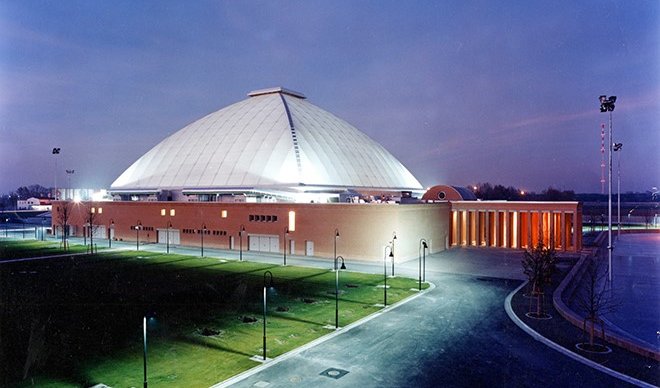
Program
About the event
Brahms and Rimsky-Korsakov: the conservative and the innovator. Absolute and program music. They are like chalk and cheese, and yet how well their music sounds in succession! The Budapest Festival Orchestra's concert in Ravenna opens with the symphony by Brahms, who struggled to emerge from Beethoven's shadow - and Dvořák said this was his most successful piece in this genre. Then it's on to Slavic music, which has a special place in German-centric music history. The era of national awakening produced unforgettable compositions everywhere. The second block of the concert, peppered with intrigue, love, eroticism and jokes will be formed by Sheherezade, which is a selection of centuries-old Indian, Persian, and Egyptian narratives composed by Rimsky-Korsakov, the pioneer of Russian national musical tales for orchestra and solo violin.
It took six years for Brahms to approach the symphony genre again after finishing his 2nd. A single summer in the Rhine region was enough to get the rather complex score ready and the work was premiered on a Viennese podium at the end of 1883. His Third Symphony is often likened to Beethoven’s Eroica, although Brahms’ hero is totally different. The key is F major, but the first two chords immediately lead the audience into the gloomy F minor, and this dichotomy remains throughout. The frequent transitions to a minor key from the basic F major key and the conflicts of the first movement suggest that here the protagonist is mainly fighting with himself. He is a heroic figure who nevertheless fails again and again. For the first time in the history of music, each movement ends in piano, as if it is dying. The ominous endings of the individual movements, the gloomy, slow response given to the slow movement (instead of a traditionally more relaxed scherzo), and the gradually hushed ending of the Finale instead of a fanfare turn the usual heroic march into a psychological drama. The symphony contains many musical allusions, real or imagined. These include the homage to Wagner, who had died not long before, the allusion to Schumann's 'Rhine' symphony and the F-A-F (or F-A flat-F) motif - frei aber froh, or free but happy - which appears in each of the four movements.
Between the title and opus number of the only still popular piece of Rimsky-Korsakov, a member of The Russian Five, the following description is added: “Symphonic Suite After The Arabian Nights”. This makes it even more obvious that the program of the composition is based on the Arabian collection of tales. For a thousand and one nights, Sheherezade (violin solo) keeps the attention of Sultan Sharian (trombones and tuba), who executes his wives one by one, by telling him tales, thus avoiding death. The composer set four tales to music in 1888, describing the characters with apposite orchestration: Sindbad (violoncello), Prince Kalender (bassoon), the young Princess and her Prince's love (two violins), and the story of a festival in Baghdad, which includes a ship that has hit a magnetic mountain and pulverized by a stormy sea.
